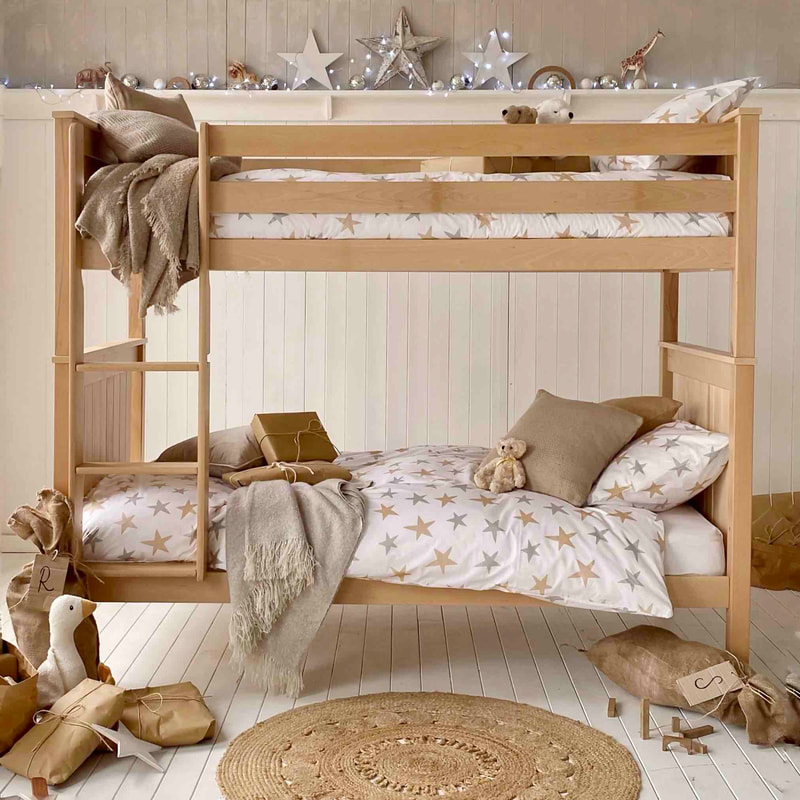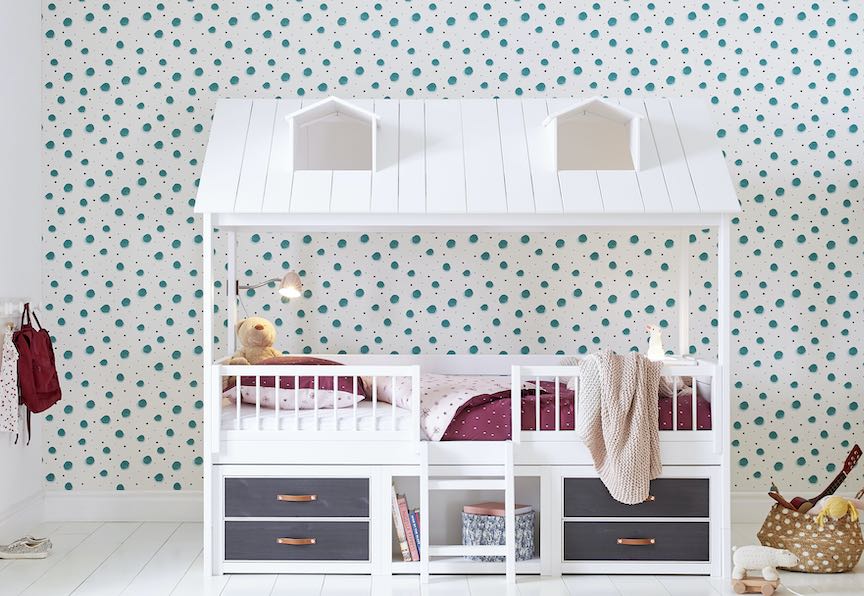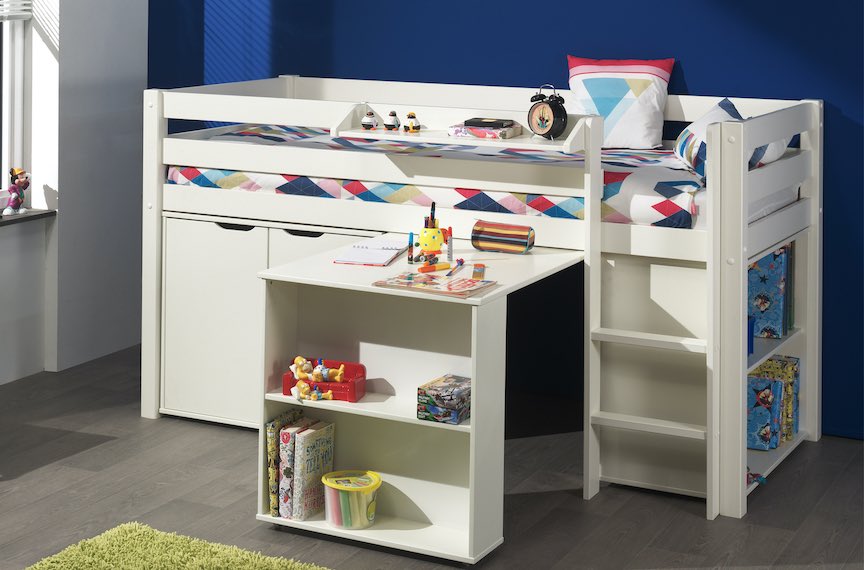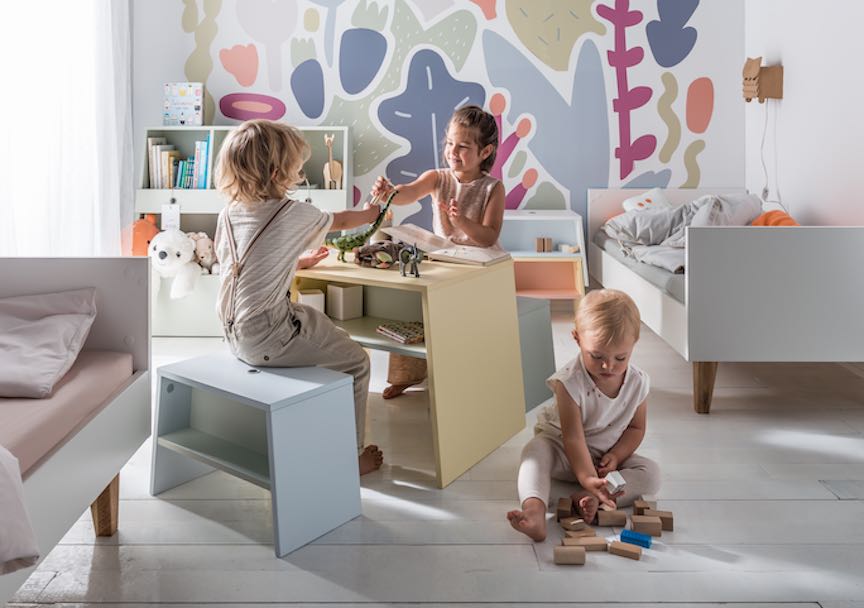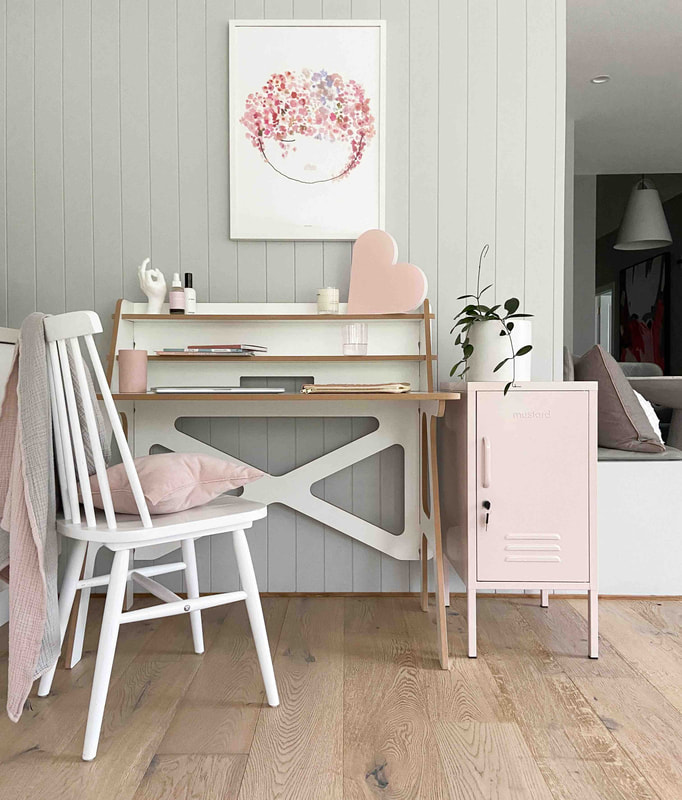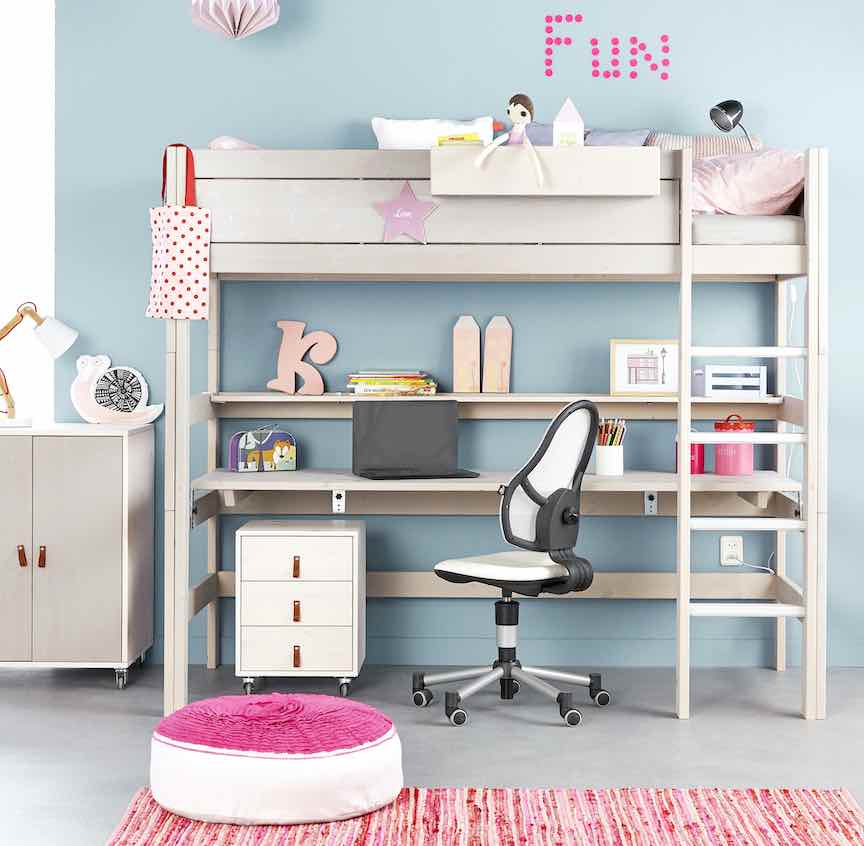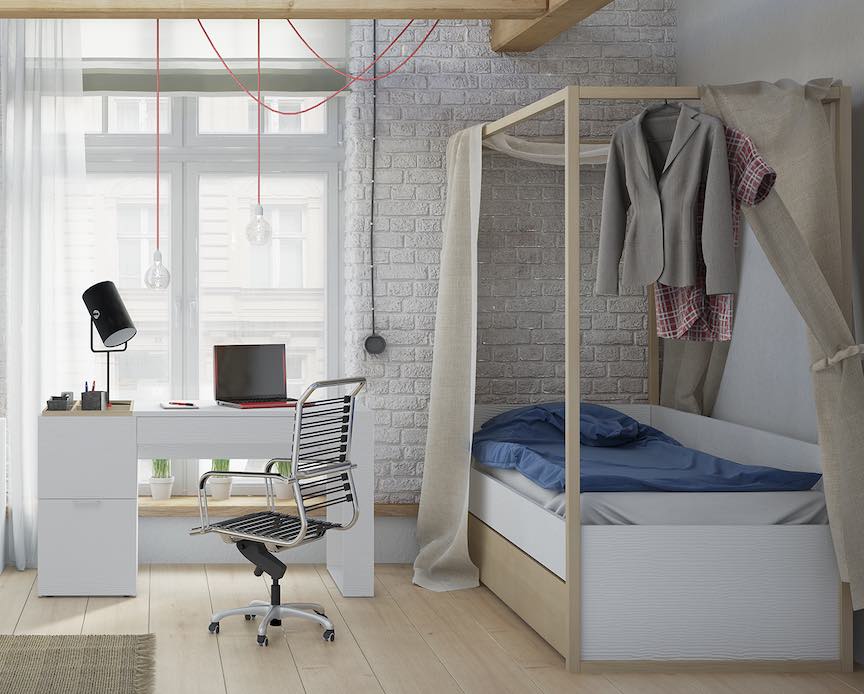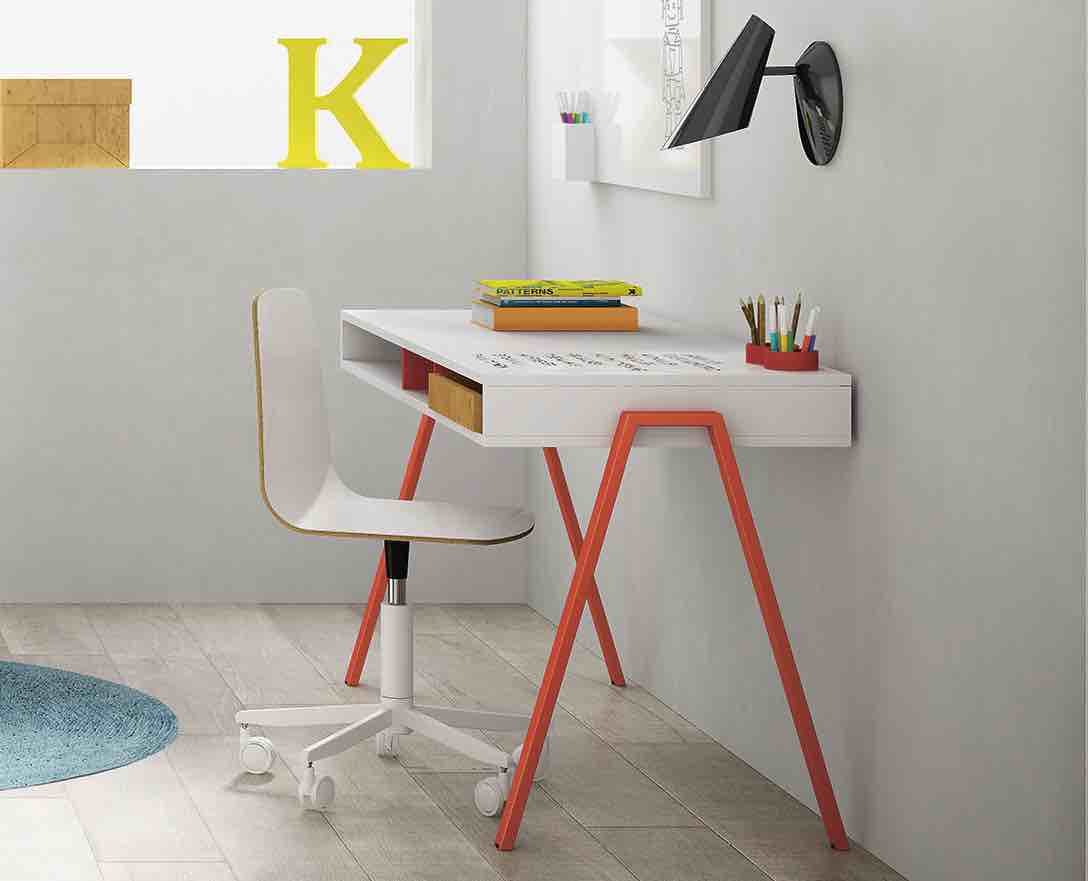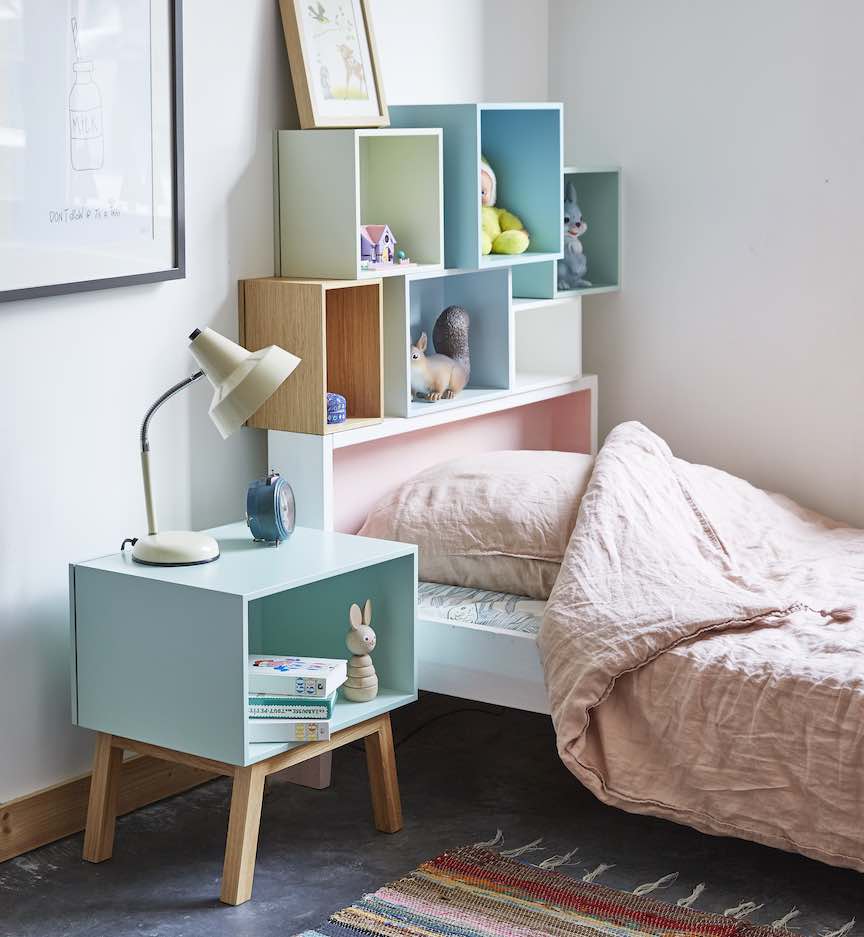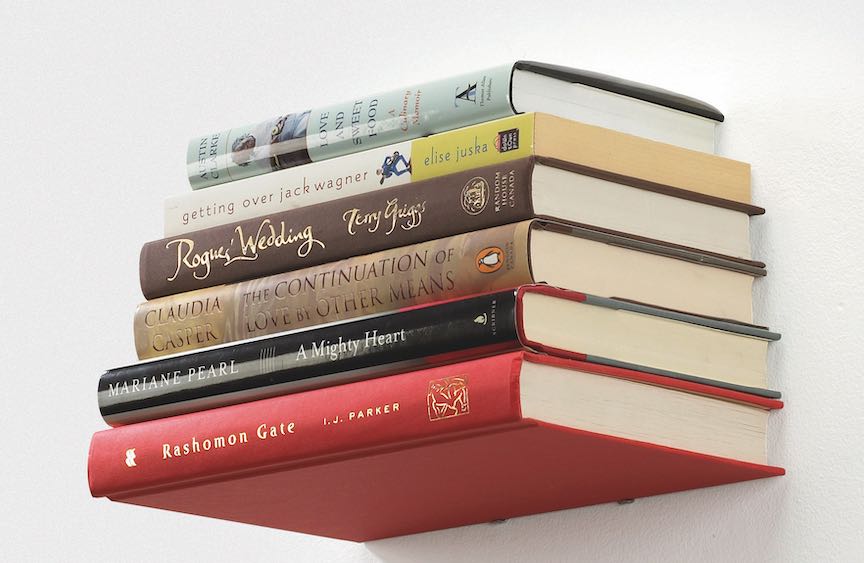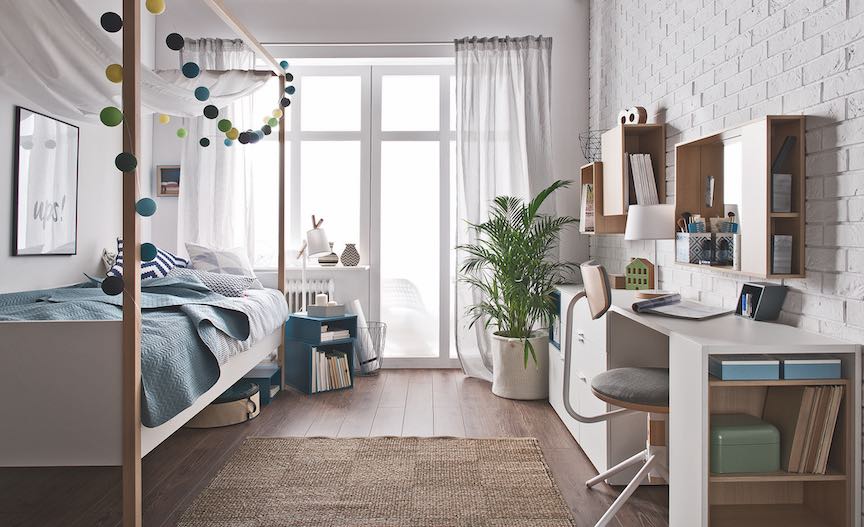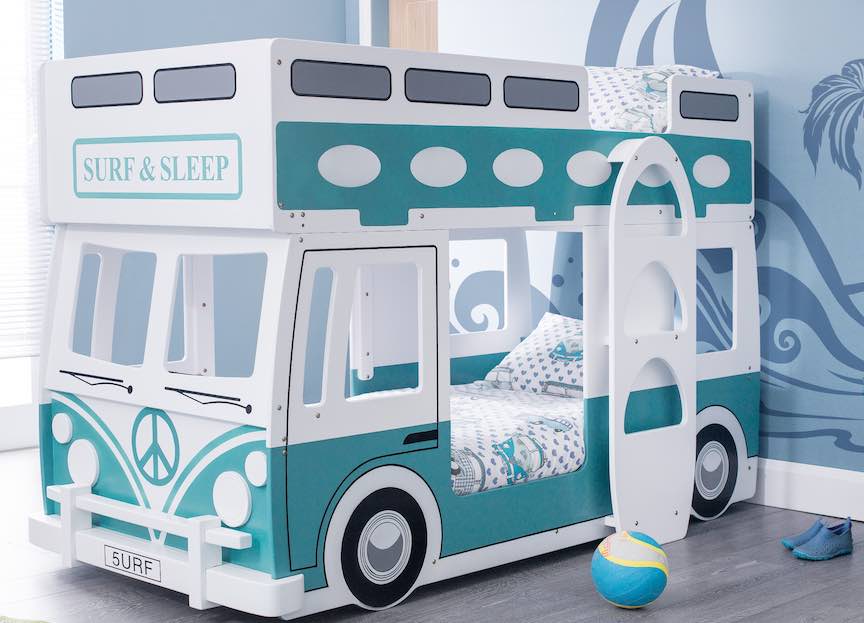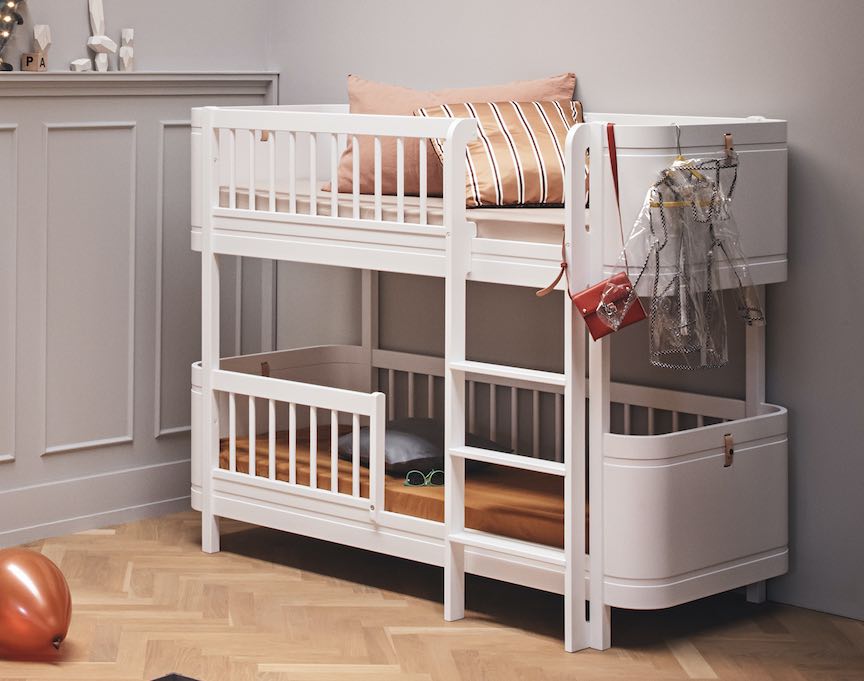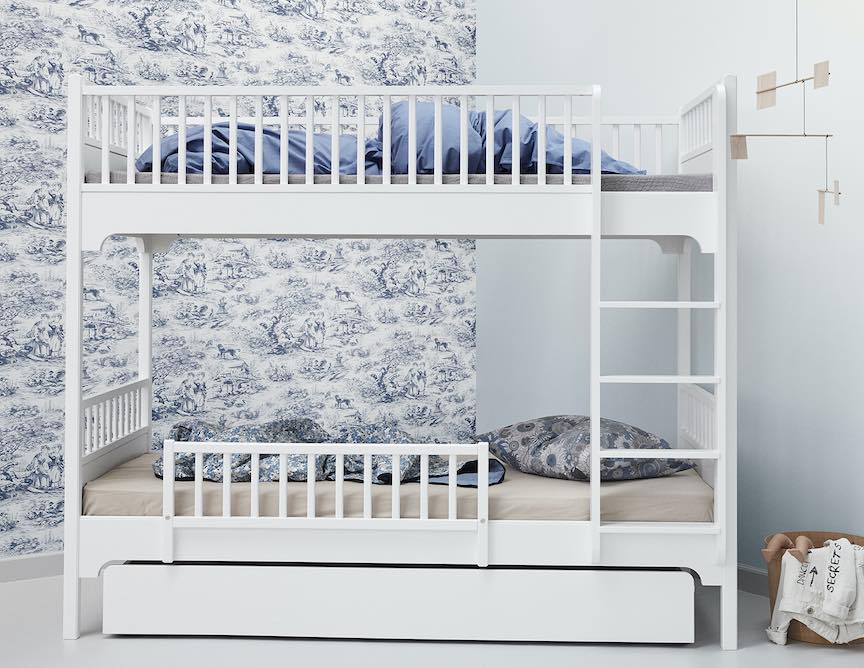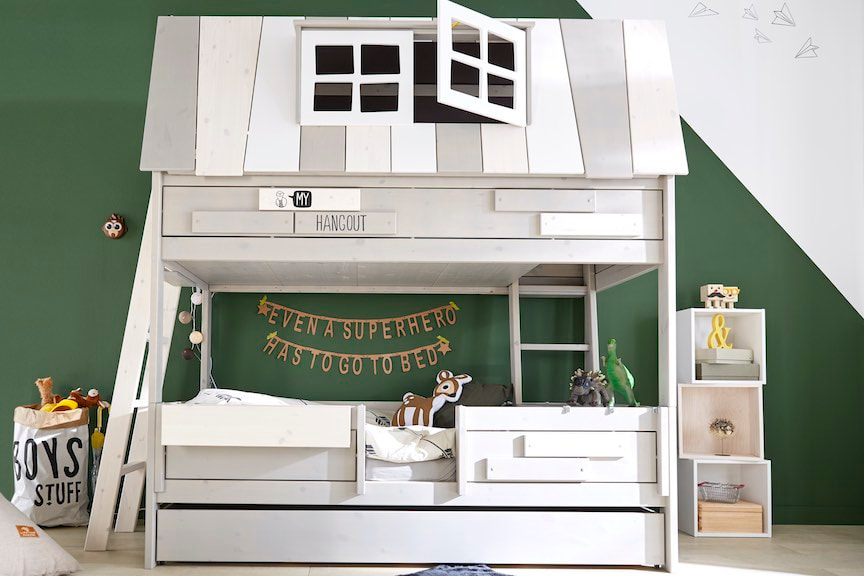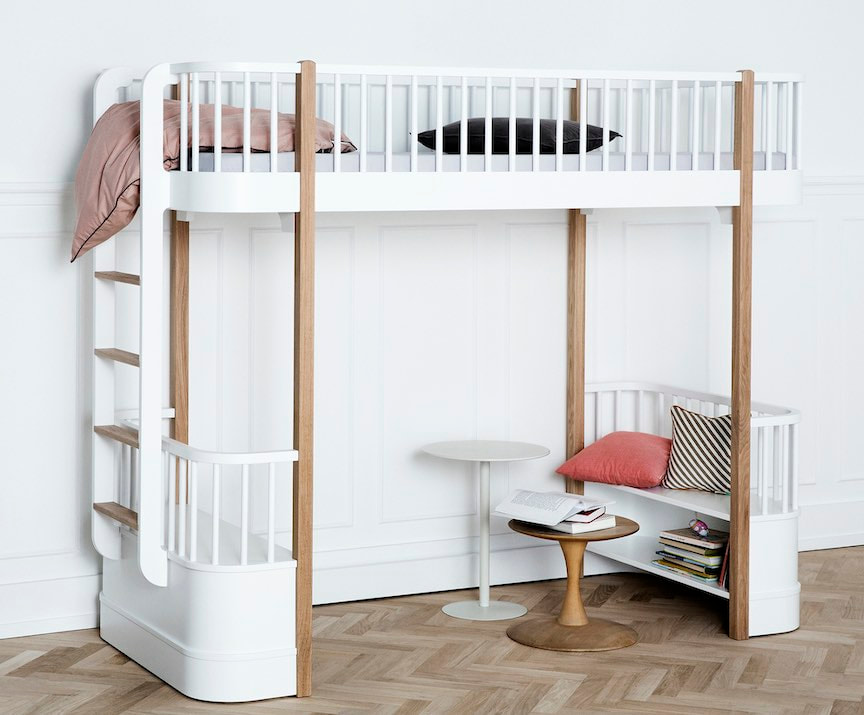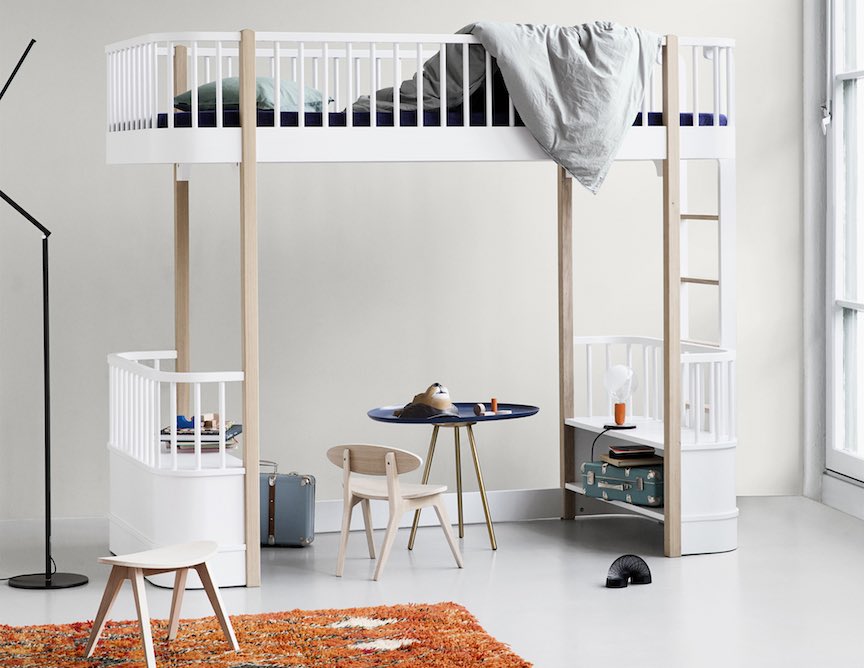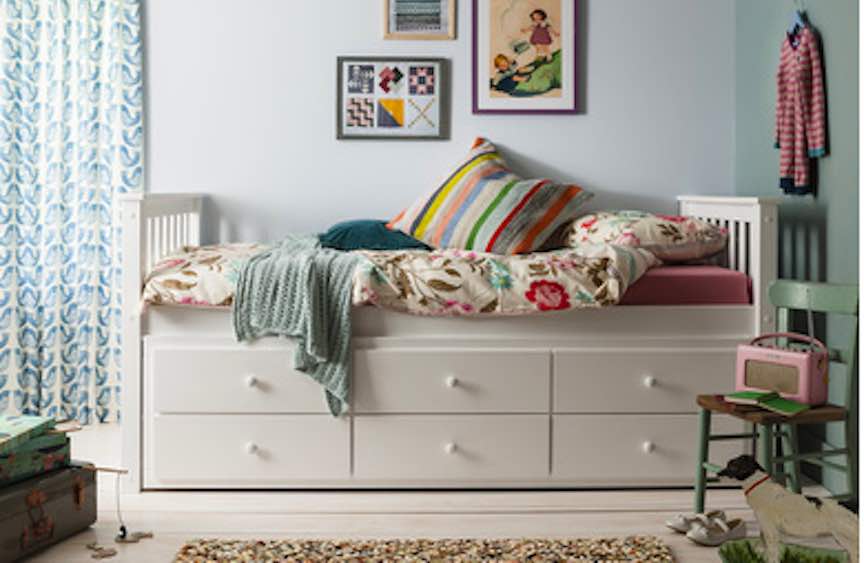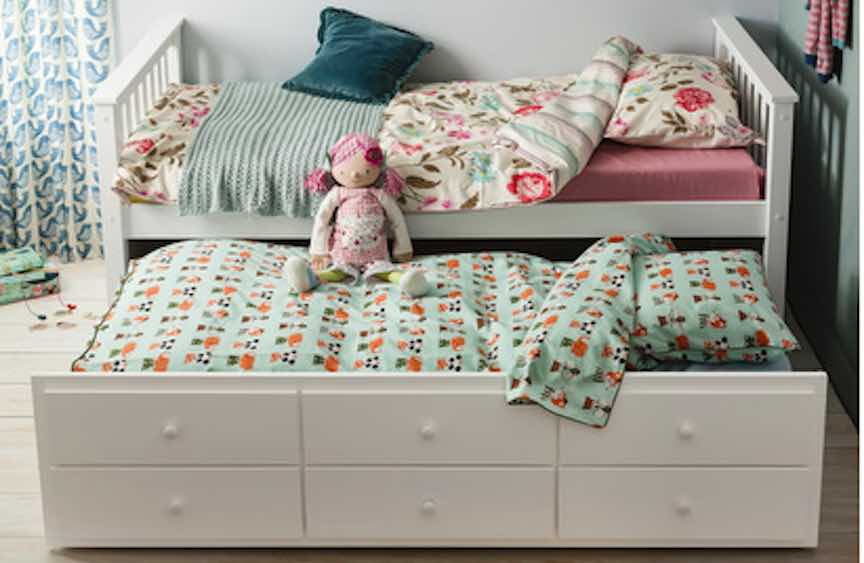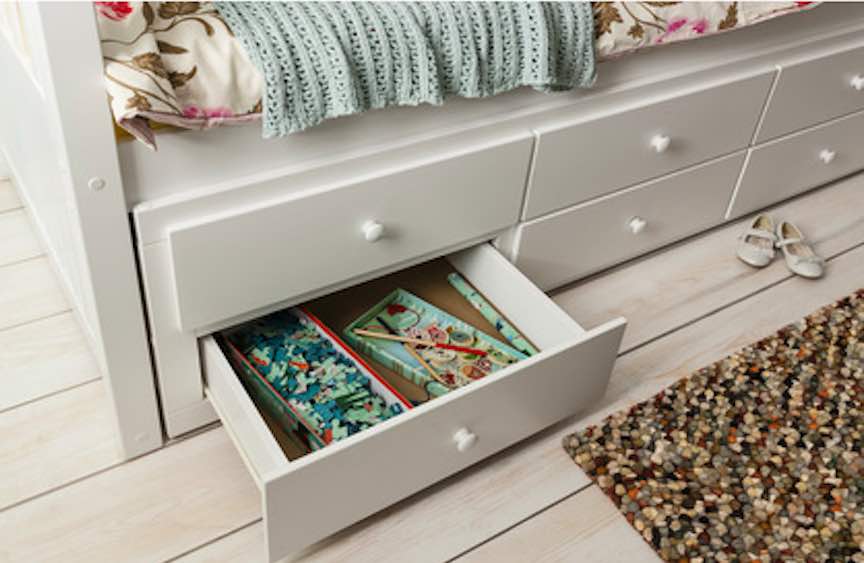Children can benefit from sharing a room, here's how to make it a great experience all round
Providing that the age difference is not too great, most siblings benefit from sharing a room. Of course, if you have no option you just have to make it work. When I was pregnant with our second child, I panicked about how we'd fit another person into a house that was already cramped. And, for the first year of her life the baby slept in our room.
But as she neared her first birthday, I realised that her sister never woke when she cried and that it would be healthier for all of us for the kids to share. So we swapped the wardrobe in the second bedroom for the cot. Most people dream of a walk-in wardrobe, we got to dream in one! It worked from the start. They slept through each others' cries and they settled for the night better. I wish I'd tried it earlier. For successful co-sharing, however, you need to do two things: thoughtfully plan the bedroom’s design and prepare the children for the move. Planning the room
Give each child their own territory in the room, e.g. a shelf or table, so that they've their own space upon which to stamp their personality.
Get each child involved in the room’s décor. Give them each a wall to decorate with their own stickers, pin-boards and posters. The Jungle Animal wall decals, shown above, are from Amazon. Allow them to choose different bed-linen, rugs and cushions, but for aesthetic reasons ensure that they complement each other.
To maximise floor playing space, opt for bunkbeds if one child is old enough. It's not recommended for children under six to sleep on the top bunk. A truckle bed, which pulls out from underneath a single bed, is a good option for smaller children.
Look to the future. Buy bunks that divide into singles, so if your kids are too young for bunks now you've the option later or if you move the children into separate rooms later, you can switch the bunk to singles.
Maximise storage space. If you have room, look at mid-sleeper or cabin beds, which have furniture such as a desk, wardrobe and shelving underneath. The Low Sleeper Kids Cabin Bed shown above is from Amazon. Buy under-bed storage drawers and if you've a baby sharing with an older child, use wall-hung storage that only the older child can reach for keeping their treasured toys away from tiny fingers.
Preparing the children For a successful move, emphasis the positives of sharing a room. Talk about how fun it will be and how they can play together more. Brief the child who is already resident in the room on how to give a special welcome to his or her sibling. Set rules to teach the children to respect each others' things and their right to privacy. ‘Ask before taking’ and ‘knock before entering’, for example. Read our bunk bed buying guide here
0 Comments
Everything you should consider when shopping for a stylish cabin bed for a child's small roomWhat is a cabin bed?
A cabin bed or mid-sleeper, as they are sometimes also called, are mid-height beds, not quite as high as a traditional bunkbeds, which have a storage or play space beneath the sleeping platform. The most practical and stylish cabin beds manage to incorporate a host of useful functions within the bed and still look great.
The Kids Pilot cabin bed shown above from Amazon, for example, includes a bedside table that doubles up as a desk when a chair is pulled up to it, a bookshelf and a step to make it easy to access the sleeping area safely. What age are cabin beds suitable for?
A child should be six-years-old or older to sleep up high on the top bunk of a bunk bed. As cabin beds are raised quite a bit higher off the ground than a standard bed, it's advisable that you wait until your child is at least six before putting them in one too.
The Lifetime Beach House cabin bed, shown above, comes with railings that should stop any restless sleepers from taking a wrong turn and tumbling on to the floor in the night. The steps leading to the sleeping platform also make it easy to climb in and out of. It has useful storage drawers and display space beneath it too, plus a fun roof shape above, so that kids can use it as a play space as well. A cabin bed with play space
When your children are still at primary school, you want to maximise the floor playing space in their bedrooms and some cabin beds give you the opportunity to free up the space beneath the bed. You can dress up that under bed area with a play tent, as shown in the Warmiehomy cabin bed with tent from Amazon, shown above, because every child loves a den. You can also use it to store toys, build train sets and play Monopoly.
A side pocket, as shown above, is also useful for holding books and other items children may want by their bedside at night. Before investing in a themed play bed, however, think about whether the play tent or perhaps the roof above the sleeping area can be removed once your child is no longer enchanted by imaginary play. You want a bed that will last them into secondary school. A cabin bed with a desk
If you can't comfortably squeeze a stand-alone desk and a bed into your child's room, a cabin bed with a desk is the solution. In the Pino Kids cabin bed shown above the desk can be tucked neatly underneath the bed when not in use, so it doesn't take up additional floor space. It also offers shelf storage and hidden cabinet storage options.
Children benefit from having their own special work station. Here we look at the best children's desks and teen desks on the marketBest children's desks for play
A play desk comes in really useful for preparing young children for nursery and school, where they will be encouraged to spend at least a few minutes of most days sitting down drawing, painting or doing something else creative.
Look for a play desk that is hard-wearing, wipeable and preferably comes with some storage. The desk shown above is available with a stool that can double up as a mini book case and beneath the desk itself there is a shelf for books and paper. This desk should last your children until the end of infant school, so they can get used to doing small homework tasks on it. Desks that will last from primary to uni
If you want a desk that will take your child from finger-painting to algebra, look for a timeless, simply designed adult-sized unit. Your children may need to use a high stool or a chair topped up with a cushion to use it initially, but they will soon grow into it.
This Puzzle Desk comes with a hole at the back for a cable, which will come in useful once they are ready for a computer. It also has useful shelves for storing notebooks and stationary. Teen desks that can be hidden away
Even when space is really tight, you may be able to squeeze a drop down desk into your child's room or another space in your home. The desk area on the SoBuy, Folding Wooden Wall-Mounted drop-leaf desk shown above from Amazon, can be folded down against the wall when it's not in use.
Beds that double up as desks
Or, you could go with a bed that incorporates a desk area beneath it. These are available in mid-sleepers or high sleepers. The high-sleeper, as shown above, offers more head room, which means it will last your child longer, but the bed itself may be a little too high for younger children.
It can get dark under the bed area, so if you go down this route, make sure that you can position the bed close to a plug socket as a desk light will most likely be required. More high-sleeper inspiration
This Kidsaw Pilot cabin bed from Amazon is neat too. The desk area doubles up as a bedside table and it incorporates a bookshelf.
You will also find some cabin beds where a desk can be tucked into the frame of the bed when not in use. More mid-sleeper ideas Consider a vintage school desk
If you want a really compact desk with hidden storage, scour your local furniture recycling centre, car-boot sale or vintage boutique for an original old school desk. eBay is packed with them too.
Look out for the wooden ones with the flip-top lid and the ink well built-in, complete with ancient graffiti scratched on every surface; these make great teen desks You can pick them up quite cheaply, they have a very small footprint and they look great. Plus, if you get a vintage piece, it should only go up in value. Whether they are tiny babies or towering teens, you can make a compact bedroom work for a child, providing you plan it right. And these five ways to make a child's bedroom more spacious will ensure that you really make the most of your kid's bedroom.1. Make the most of the space under the bedTo make a child's bedroom feel larger and function better, opt for a bed with storage drawers, shelves or a guest bed beneath it so that there is no dead space under the bed. This funky four-poster bed from Cuckooland is available with a storage drawer and is height adjustable, so it will literally grow with your child. 2. Include a desk with storageWhether your child is a toddler or a teen, a table top in the room will be invaluable at every stage in their childhood. It can first serve as a nappy changing station and later on become a desk and maybe even a dressing table, just make sure it comes with storage. This Nidi Graphic desk has a useful storage cubby hole beneath and the top is a white board, so it can be drawn and written on. More super children's desk inspiration 3. Utilise every inch of spaceWhen space is tight, you need to make the most of every little bit of it. Alcoves, window sills, nooks and crannies, make it all work hard. Here the dead space above the bed has been filled with modular shelving, which is fixed to the wall. And, being able to see a little under the bedside table and bed as here, also helps to make a child's bedroom feel larger. 4. Work those wallsYou might not have a great deal of wall area to play with in your child's bedroom, but you want to make sure that what you do have, that isn't covered by a bed or furniture, is made to work hard. To make a child's bedroom feel larger, use the walls for storage hooks and shelving. This Umbra concealed books shelf makes books appear to float along a wall, injecting a little piece of fun into any scheme. 5. Keep the floor clearWhile you can cram the walls and sides of your child's bedroom with storage, a bed and a desk, keep the central floor area clear. Not only will this ensure that the room looks and feels more spacious, it will also give little kids room for imaginary play with their toys. While older kids can have a space to hang out with friends. By employing these five ways to make a child's bedroom more spacious, you will ensure that your kids have more space to work rest and play! Please post the results in the comments! What age can a child sleep on a top bunk? This bunk bed buyer's guide answers this and your other pressing bunk bed questions
What age can a child sleep on a top bunk? This is a frequent desperate question to come from parents who live in small homes where their kids have no option, but to share a small bedroom. When your family is growing and your property isn't, bunk beds are the ideal solution for freeing up space in your children's bedroom.
Let's answer that most pressing question first? At what age can a child sleep on a top bunk? A child should be six-years-old or older to sleep up high on the top bunk. If your child is a bit of a dare devil and might be tempted to jump off instead of taking the ladder or stairs, hold off until they are a bit older than this.
Bunk bed safety features
To keep your little one's extra safe in their bunk beds, look for one with a high safety rail. If your kids are on the younger side consider a model that is specifically made with little kids in mind. This Oliver Furniture Wood Mini+ Low bunk bed from Nubie is especially designed for children under nine-years-old. Slightly lower and shorter than a standard bunk, your under six-year-old can take the lower bunk and your under ten-year-old the top bunk. Also, note that a sloping ladder, as shown below, is easier for a younger child to climb than one that is flat to the side of the bunk. This will take up more precious space in your room though. 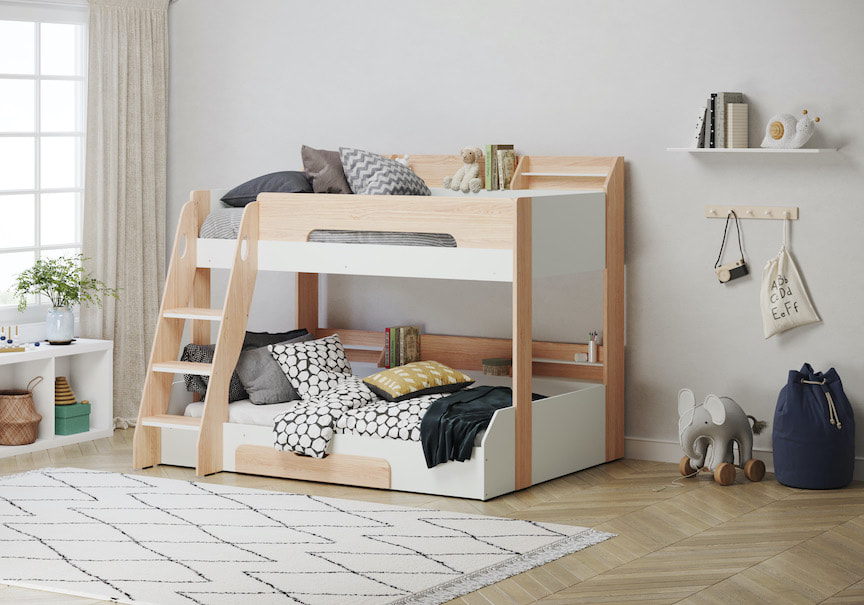 Flick Triple Bunk Bed from Cuckooland Flick Triple Bunk Bed from Cuckooland
The Flick Triple bunk, shown above, can even cater for three! It's perfect for sleep overs, a space short three-child family or even a whole family living in a one bedroom apartment.
Look for a bunk bed that splits into two singles
A bunk bed that splits into two single beds, such as the one shown above, will have a much longer life span than one that doesn't. If you move house or extend to create an extra bedroom you don't have to go to the expense of buying an extra bed, you just split the bunk bed in two.
Space for a trundle bed tucked beneath the bunk bed, also shown above, is useful when it comes to sleepovers as well. Novelty bunk beds
There are a whole array of fantastic novelty bunk beds on the market. Such as the Adventure Hang Out bed, shown above. Your kids will delight in hanging out here, but they will likely grow out of it before they reach secondary school. It's a fun short-term investment, .but one that should have a reasonable resale value if it's kept in good condition.
Children's desk inspiration for small homes Bunk beds with storage
You can also get some great bunk beds with storage options, which are particularly useful for small rooms. The one shown above incorporates drawers beneath the bottom bunk and a wardrobe and shelving beneath and around the top bunk. A pull-out desk is another useful feature to look for. Just be aware that these storage bunks often have a larger footprint than standard bunks so make sure you have the space to accommodate one before purchasing.
Triple bunk beds are a thing
You can really stack em up with a triple bunk bed. This Flair Furnishings triple bunk bed is from Amazon. Bed linen changing day will be calorie-burning work out with with this one!
Free up play space with a midsleeper
If you have one child in a small room, free up play space in the room by going for a mid or high sleeper bed with no bottom bunk. This Sydney high sleeper cabin bed from Vida Designs, is pretty reasonably priced from Amazon. You can stash a whole train track beneath it.
This is a cut above the average high-sleeperSometimes loft beds try too hard, they are over designed and too much is packed into their little footprint. If you're furnishing a box room, a bed that sits atop a wardrobe, a desk, a chest of drawers and a book shelf is great, but if you have a little more space than this, look for a loft bed that is allowed to breathe a little. This Oliver Furniture luxury high loft bed in white and oak from Cuckooland is our favourite loft bed design to date. It comes with two cute benches with open shelving beneath, ideal for books and games; and, you can slip a little desk at one end for homework. Positioning the ladder at the side makes the 'ground' floor area so much easier to access and this, together with the slatted sides, lead the eye further into the room too, which should make the whole area feel bigger. At £1,637 it should be built to last. 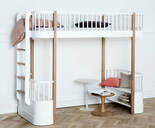 Before you buy a raised bed, check out our bunk bed buying guide here. It's full of hints and tips to buying the best bunk bed for your kids and their room One super practical and stylish trundle bed
You normally have to choose between one or the other: a bed with a pull out trundle bed beneath to be slid open for sleepovers; or, a bed with storage. Noa & Nani has realised how important both are; and, this one, provides the two options.
The row of drawers on the top are part of a facia that conceals the trundle bed. The bottom row of drawers is actually three separate storage drawers, perfect for clothes, toys or books.
This is the Loki bed, ideal for kids' rooms or guest rooms.
|
|
